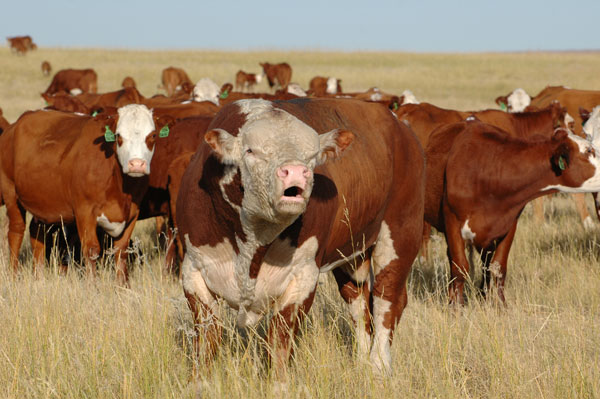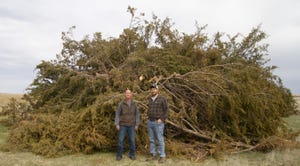Don’t Save Pennies To Waste Dollars By Skipping A BSE
The bull makes up half of every mating opportunity. He is necessary to produce a calf, and it’s integral that he is physically sound and fertile to improve the odds of conception.
April 24, 2014

This time of year, many producers have calves already on the ground or some hitting the ground and are preparing for breeding season. With breeding season here, it’s time to have the veterinarian perform a Breeding Soundness Evaluation (BSE) on the herd sires.
There are some who would argue it costs too much to pay someone to perform the evaluation, or that one isn’t needed because the bulls did just fine last year. Those attitudes bring two questions to mind:
If a BSE costs too much, then how much does it cost to not sell any calves next fall?
If there’s not enough time to have a BSE performed on your bulls, then how much time is available next spring to watch a herd of open cows not calve?
Join the conversation! Follow us on Facebook and Twitter.
The bull makes up half of every mating opportunity. He is necessary to produce a calf, and it’s integral that he is physically sound and fertile to improve the odds of conception. An infertile bull can cost an entire calf crop. The cost associated with no calves to market due to infertility is the cost of carrying those cows for a full year, plus the opportunity cost associated with the resources used on the cattle herd that likely could have been devoted to something else with a positive return.
While an infertile bull can cost a small fortune depending on the size of the cattle herd, a sub-fertile bull can also mean significant costs to a producer in two ways – a reduced conception and calving rate, and in pounds at weaning if he fails to settle a cow during her first heat cycle.
To explore this further, let’s consider an operation with 30 cows. The difference between a 90% calf crop (27 calves) with a fertile bull, and an 80% calf crop (24 calves) with a sub-fertile bull is three fewer calves from the sub-fertile bull. If those three additional calves from the fertile bull weighed 525 lbs. at weaning and brought $194/cwt., then they’d be worth $1,018.50/head, or a total of $3,055.50.
But the story doesn’t end there. Even if a sub-fertile bull settles the cows later in the season, it can cost a producer because cows bred in the first heat cycle will typically wean heavier calves than cattle settled in the second or third heat cycle.
A big payoff
So, if we assume that the average weaning weight of calves from the sub-fertile bull is 500 lbs., rather than the 525-lb. weaning weight of calves from the fertile bull, then we would have 25 lbs./head fewer to market. If that 500-lb. calf brought $200/cwt., then each calf would be worth $1,000. A total of 24 calves worth $1,000/head results in total revenue of $24,000. Meanwhile, 27 calves worth $1,018.50/head results in total revenue of $27,499.50. Thus, the fertile bull returned nearly $3,500 more than the sub-fertile bull.
In addition, the use of a sub-fertile bull could result in a much lower calf crop percentage than used in this example, which would cost a producer even more. So the question is: "can a producer afford not to have a BSE performed on the bull?"
The economic benefits associated with the decision to have the bull tested before the start of the breeding season seems to be fairly straightforward for producers with a defined breeding season. But how do producers with a continuous breeding season evaluate this decision? The answer is to transition the herd to a defined breeding and calving season.
Many factors can influence a bull's ability to breed, and it can be difficult to keep an eye on the bull for 365 days/year. When the cows are exposed to the bull year-round, it becomes difficult to determine if the reproductive inefficiency is with the cow or if it’s with the bull. Producers can have the bull tested at a certain time every year, but his fertility may be impacted in some manner during the year, which renders him unable to settle cows.
Of course, producers would recognize this inability at some point. However, the producer with a continuous breeding season would have to determine if it’s the bull or the cow that has the reproductive inefficiency. An inefficiency associated with a bull would likely be recognized more quickly in a herd with a defined breeding season.
Thus, the moral of the story is to have a BSE performed on all bulls before every breeding season, and work to establish a defined breeding season if one is not currently in place.
Andrew P. Griffith is an assistant professor in the University of Tennessee’s Department of Agricultural and Resource Economics.
You Might Also Like:
15 ATVs and UTVs That Are New For 2014
EPA Moves To Exert Control Over Virtually All U.S. Water
You May Also Like
.png?width=300&auto=webp&quality=80&disable=upscale)


